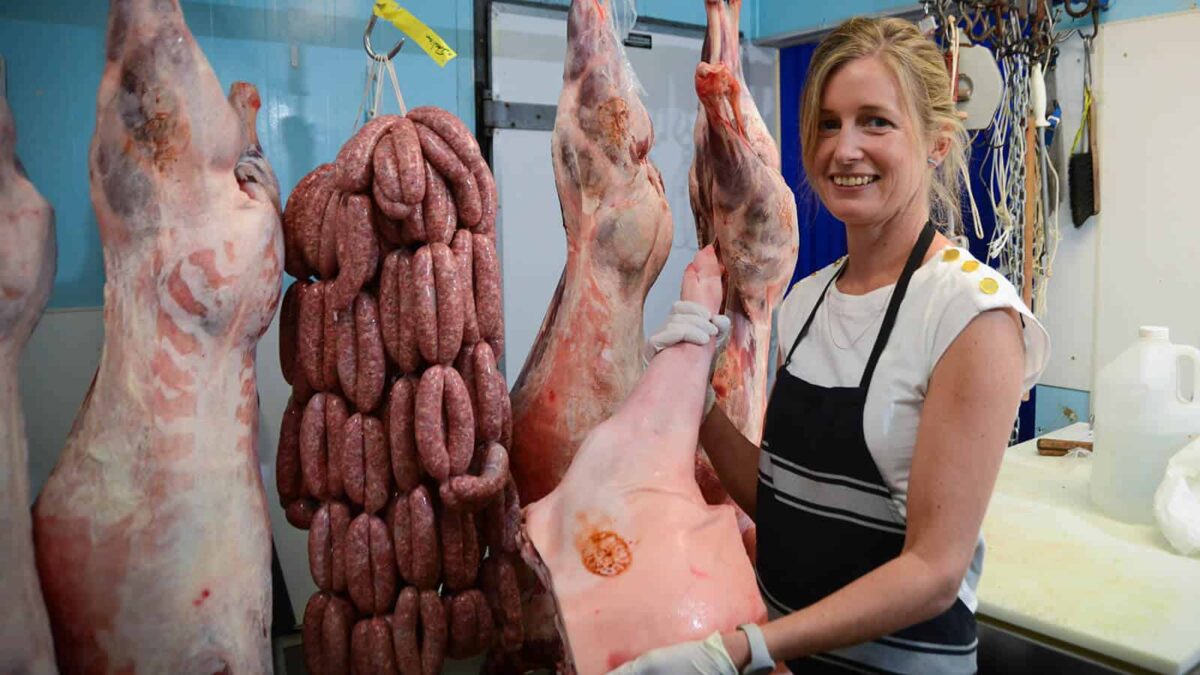Introduction by Tom Belford
Our region’s branding history includes ‘fruitbowl’, ‘wine country’ and, with broader meaning, ‘we grow great things’. To some, our food makes Hawke’s Bay a destination … a place to visit to sample world-class restaurants serving our best local-grown ingredients.
Says Annie Dundas, Tourism HB director: “Food is becoming an increasingly important way for people to experience a destination. For a long time it wasn’t a driver for travel, but that has changed with the desire for people to truly understand the provenance of what they eat and to share in that experience with others.”
To others, our food is our major product … driving exports to discerning overseas consumers.
“Tourism in, food out are linked … they benefit each other” as marketing maven Kim Thorp points out. Discerning overseas consumers might sample Hawke’s Bay’s best, inspiring them to add our region to their travels. And the ‘promise kept’ (Kim’s favourite definition of a ‘brand’) when they visit keeps them buying our Bostock apples and Firstlight steaks and premium wines when they return home.
When Jessica Soutar Barron and I first talked about inviting some Hawke’s Bay foodies to name their favourite food brands, I was thinking about exports. If one were to put together a basket of Hawke’s Bay foods (and beverages) that would best show off our region’s provenance to the outside world, what dozen or so items would they include?

But as you’ll see in the following pages, our intrepid foodies responded differently. Pretty much to a person, their mantra was ‘eat seasonal and eat local’! Yes, you’ll see a few brands pop up that might find their way to shelves in, say, Whole Foods in the US or Sainsbury’s in the UK, but that wasn’t the focus of our ‘advisors’.
Perplexed, I took the ‘export’ challenge to Kim. If foodies in overseas markets are delivering the same message to their premium consumers, why would these overseas consumers be interested in distant Hawke’s Bay’s offerings?
Through Kim’s telescope, the ‘Hawke’s Bay’ brand, which might provide a strong sales platform for our food exports, narrows from a remarkable, appealing climate … to food and wine production enabled by that climate … to food and wine in the ‘premium’ space.
Can ‘Hawke’s Bay’ deliver as the uber-brand that lifts all the individual HB food brands seeking to compete in overseas markets?
And, given his assessment of the global marketplace and its most discerning consumers, ‘premium’ in the food space means something very specific … natural and authentic. These are the most highly valued attributes, and top-end consumers seek them out anywhere. “Natural is what these people will spend more money on.”
These top-end consumers are passionate about the products they buy, have limitless information at their fingertips, and avidly use social/digital media. So they can be invaluable champions of a brand, but also merciless critics if deceived or disappointed – if the brand doesn’t keep its promise.
In the context of food and Hawke’s Bay, our promise of ‘natural and authentic’ rests on our food products coming from a clean, healthy environment, from high standards of animal welfare, and from remaining a GM free region.
As Kim sees it, the worst thing we could do marketing-wise, either as a region or as individual food brands, is “live a lie”. In his view, Hawke’s Bay’s story is authentic today, but anything that might “derail” or “disrupt” our ability to promote its products as natural and authentic – from dirty rivers to GM growing – would undermine our export prospects. “Anything that muddies those waters does not help at all.”
If one accepts that view, how then to best project the ‘Hawke’s Bay’ brand to the outside world? Can ‘Hawke’s Bay’ deliver as the uber-brand that lifts all the individual HB food brands seeking to compete in overseas markets?
It’s a ’chicken and egg’ question. Kim says that it would take huge amounts of money to effectively project the ‘Hawke’s Bay’ brand as such; that’s probably beyond our capacity. Our strongest effort to ‘sell’ Hawke’s Bay lies in tourism, to make our region a destination. Although as noted at the outset, those tourists return home, hopefully, as ‘ambassadors’ for NZ’s food exports.
As Kim sees it, it’s the individual HB food brands that need to tell their stories more aggressively. “We can do much more to capture and inform about the natural attributes of what we have.” Those stories of authenticity should be delivered with “consistency and more budget … it does cost, sadly”.
That’s how the ‘Hawke’s Bay’ brand will grow abroad … hopefully with the image clarity and appeal of a Tuscany.
With that bigger picture in mind, on to our local foodies and their foodbaskets.
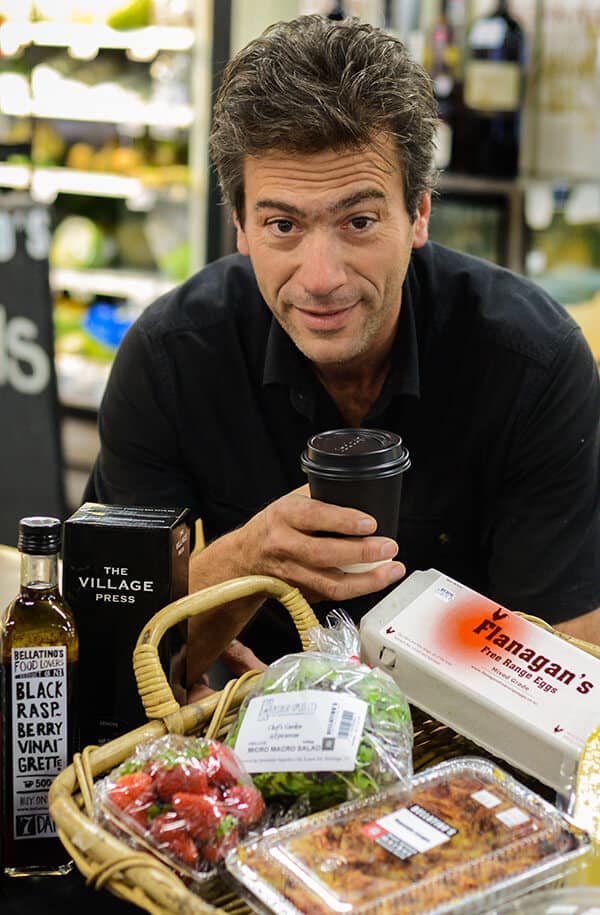
HB’s Taste Merchants
By Jess Soutar Barron
Every foodie has a list. The ultimate shopping list, the list you pull out when planning a party, the desert island list: “If I could only eat ten things for the rest of my life, they would be…”.
And being a loyal bunch, much of what’s listed is local, linked to friends and family, loaded with as much memory and meaning as it is taste and texture. Hawke’s Bay is well endowed with edibles. High end, some of it, luxury, value-add items, but also roadside stalls, in season PYO, home gardens, and the preserving and pickling that goes with that.
Our food culture includes advocates and ambassadors, restaurant and cafe operators, chefs and caterers, the producers themselves. BayBuzz asked ten of them to share their personal food basket of Hawke’s Bay, their list of the tastes they can’t live without.
Bart Narracci
Bart Narracci of Bellatino’s in Havelock North knew right away Hawke’s Bay was the place for him when he first glimpsed the ‘sunshine’. In his Italian grocery in Auckland he stocked a lot of fruit from Hawke’s Bay.
“The peaches from down here had a sticker with the sunshine on it. One day I said to Emma (Narracci’s wife and business partner), ‘Let’s track down the sun on those stickers’. We arrived and just fell in love,” explains Narracci.
Narracci was immediately impressed with the people who produce food in Hawke’s Bay.
“There are a lot of clever people down here who know what they’re doing; it’s in their blood.” He’s another who sings the praises of Clyde Potter from Epicurean. “He’s incredible. He’s been growing for 30-odd years and he has a lot of knowledge.”
Narracci’s list is made up of things stocked in his shop. That’s not monocular self-promotion but honest necessity. Life is home and the shop so Narracci feeds his family from what he has in store, right down to his 11 year old’s appetite for pate. The Narracci children, Isabella and Santino, are honoured in the shop’s name, an old Italian tradition.
Bellatino’s is all about family, feeding his own and other people’s; his ready-made meals are a life-saver for parents, with up to 15 different options and two soups in the winter months.
“There’s no rubbish, nothing nasty, everything is fresh,” he says.
After eight years in the Bay Narracci is still enamoured by it. “How perfect is it here? Everything is so close and so easy.”
Narracci’s list includes Bellatino’s own black raspberry vinaigrette, organic gluten-free chicken liver pate, and fair trade organic coffee blended by near-by roastery Hawthorne. Local staples are Epicurean’s mixed organic micro/macro salad, Scott’s strawberries, Hohepa cheese, Village Press oil, Flanagan’s free range eggs and Telegraph Hill balsamic drizzle – “A condiment every pantry should have!”
Anissa Talbi-Dobson
Anissa Talbi-Dobson is honest but apologetic. “I never go shopping. I always get my supplies from the Farmer’s Market because I’m there anyway and everything I need is there.”
Some of her groceries she trades for chocolate, from her L’Atelier Chocolat stall, fitting for a product originally used as currency.
“It’s a time thing, but also it’s logical for us to support local as much as we can,” says Talbi-Dobson. “This is a foodie part of the country, there is so much fresh produce here.”
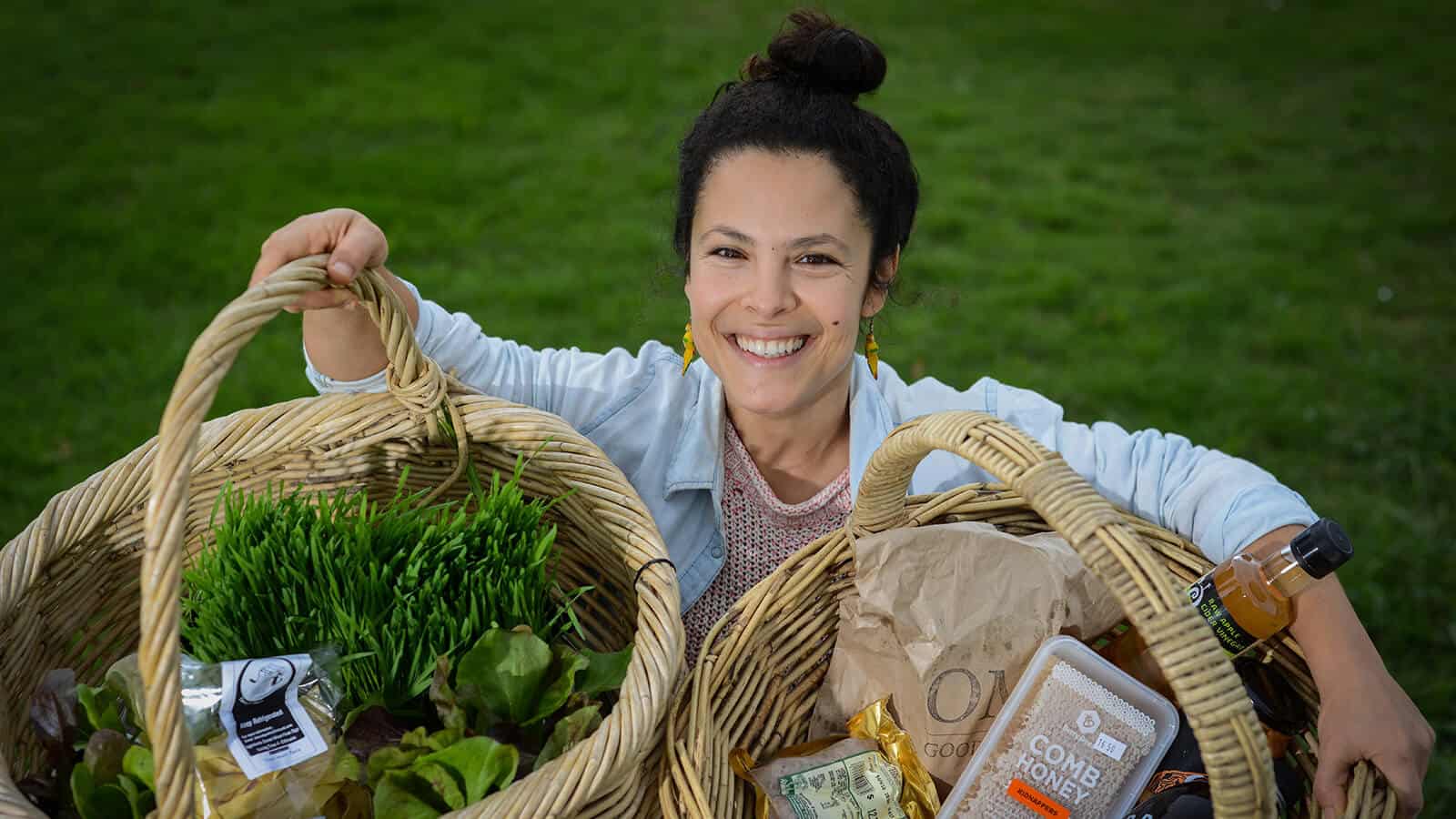
Of particular delight for Talbi-Dobson are those under-the-radar road-side stalls so iconic to the Bay and something not found in her home country of France.
“For me those stalls represent trust from human to human, and that’s a really New Zealand trait, they’re trusting and friendly, kind and helpful.”
Talbi-Dobson’s list reflects her belief that food can be curative and act as a preventative against sickness.
“What we put into our bodies is not just a separate entity, it’s part of us, and it’s more than just fuel,” says Talbi-Dobson.
Her pick of Hawke’s Bay’s best can all be found at the Farmer’s Market – bar Little Black Bird’s doughnuts, a decadent treat to cure all ills – Wheat’s Up wheatgrass, Brave Brewing EPA, Old School Ferments kimchi, Links Organics heirloom vegetables, Te Koha apple cider vinegar, Ti Kouka sausages, Oh My Goodness bread and Berry honey comb from hives managed by husband Joe’s apiarist uncle, John Berry.
Kent Baddeley
With a repertoire of 200,000 dishes and 45 years working 80 hour weeks in restaurants, Kent Baddeley has a massive amount of choice in favourite flavours. But when it comes down to it his food list is predominantly fruits and vegetables, local, as in right outside his kitchen door, and seasonal.
“I call it nano-seasonal because it’s about today and what’s good to eat right now,” he says.
His choices favour colour and give him a paint box of textures to play with.
“I’m about layering those textures and tastes, with crisp, soft, acid, crunch. I’m like a kid; I like pretty things.”
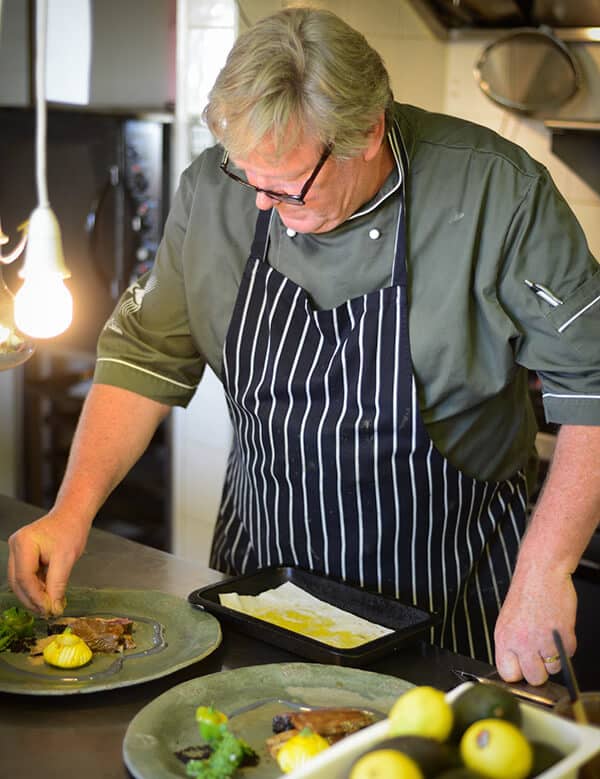
Baddeley grew up on a farm in Matawhero and ate breakfast while wandering the fields; it was foraging before foraging was hip. “It’s a birthright in New Zealand to get food from your surroundings. When you can only cook from what you grow, raise or shoot you become creative and resourceful. It’s amazing how few things you really need.”
A walk around his restaurant garden means tasting the rare and unusual. “I like things that make me think ‘That’s weird, that’s crazy’. I like exposing people to new things.”
These include black tomatillo, Mexican cucumber melons, yellow raspberry, Chilean guava, Texan tarragon and a fat fluffy leaf called all-herb, he says is very good in a sandwich. Other favourites are grown by specialist producers Epicurean and Links Organics: yukon, watermelon radish and kale sprout heads.
Every day in his kitchen at Hastings’ 1024 is different, and every dish is a homage to the producers who made the ingredients. He takes his inspiration from what he has at hand, but a permanent favourite is shiitake mushrooms grown on oak in Tutira. Telegraph Hill’s black olive powder and pink and white terraces cheese made by Origin Earth also make Baddeley’s list.
Lucinda Sherratt
There’s something celebratory about the list Lucinda Sherratt serves up. It celebrates local and seasonal of course, but also it combines a love of taste and nutrition, reflective of Sherratt’s past as a chef and nutritionist.
For someone for whom healthy eating is a high priority there are plenty of treats on Sherratt’s list. If you are going to eat something decadent, make sure it’s of the best quality, she says.
The menu at Sherratt’s Hastings cafe Little Black Bird is an extension of the way she eats at home.
“I grow a lot of my own food,” says Sherratt, who grew up on a farm in Rissington in Hawke’s Bay. “We had chickens and pigs, and foraging was a big part of life. It still is a norm rather than a novelty.”
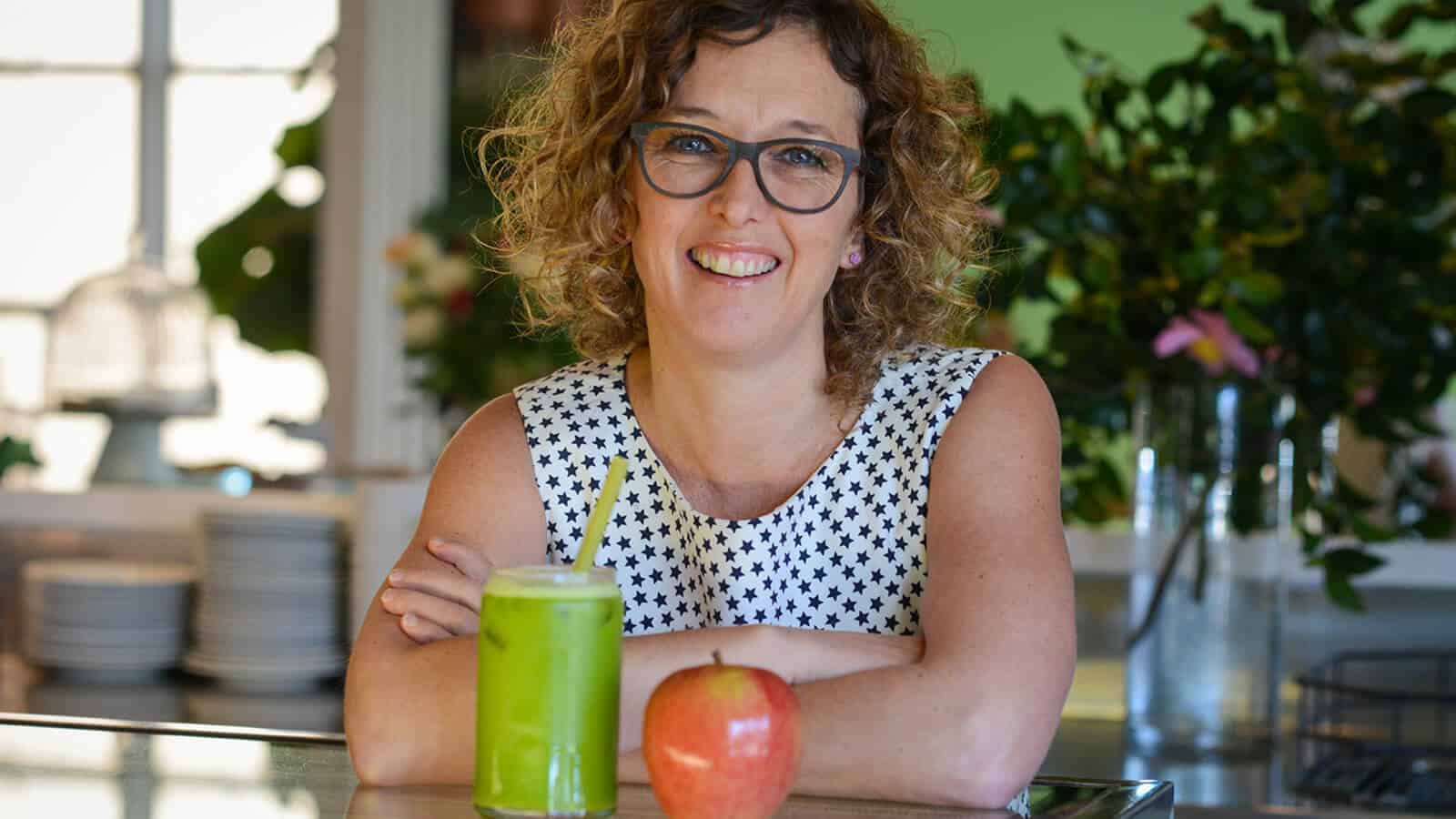
Sherratt feels this is an integral part of the cuisine of Hawke’s Bay, whether foraging in the wild, in the garden, or at out-of-the-way food stalls.
“When people visit they always comment on how cheap and bountiful our produce is.”
There are things Sherratt tries to avoid. All processed foods are out, everything is made from scratch; she avoids supermarkets. Her one real weakness is her Saturday morning treat: freshly delivered pastries from a French pastry chef, a definite benefit of living at Te Awanga.
Sherratt’s list features Epicurean radicchio, Chantal’s fresh turmeric root, Hapi walnut and parsley cheese, L’Atelier Chocolat’s caramels, Arataki honey comb, Harold’s pretzels, and jaggery and split mung dahl from Sherratt’s local Indian shop. Her wine picks are Argent cabernet sauvignon from Collaboration and montepulcianno from Beach House. The list also includes Little Black Bird’s own smoked paprika tomato sauce and cold pressed juices, and apples from Sherratt’s mother’s tree.
Prue Barton
Fresh, local and seasonal are so much a part of Prue Barton’s food list that if I ask her again in a month, it’ll be different. She’s a hunter-gatherer, going out of her way to find local flavours.
“I look for little treasures everywhere, I’m always foraging around, picking things up and making them into dishes.”
Much of what is on her list stands on its own, rather than being an ingredient to incorporate into a dish.
At the top of the list are figs: “There’s nothing like biting into a fresh fig, although we do enjoy filling them with blue cheese, wrapping them in prosciutto and baking them,” she adds. Fresh figs with Arataki’s blue borage honey is an easy alternative.
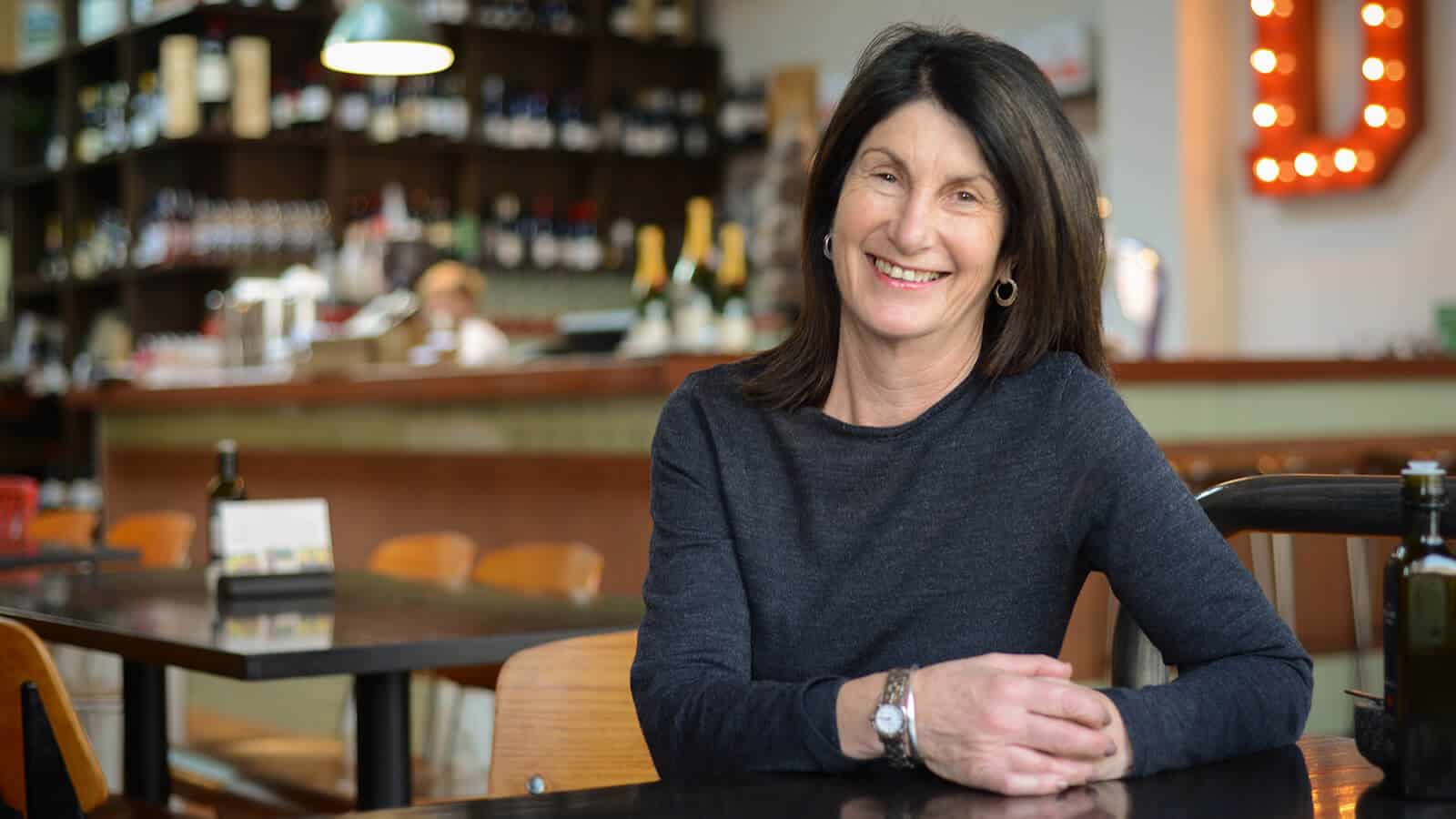
“This is what I’m enjoying at the moment, it’s seasonal because for me that’s what Hawke’s Bay is about,” says Barton.
“We only eat what’s around, what’s fresh, what’s happening.”
“We do a lot of Bostock chicken. It’s got real texture and the flavour is amazing.” Barton’s restaurant Mister D celebrates this locally-raised organic meat with a simple
French roast chicken with green salad from Epicurean and Hohepa feta cheese.
Truly celebrating seasonality is all about Hawke’s Bay fruit and Barton visits Longlands Fruit and Veg especially for golden queen peaches and quince. She gets the autumnal flavours to last well into winter by making peach chutney and quince jelly.
Barton’s wine pick is Beach House pinot gris.
“For this shoulder time of year pinot gris is a great wine because it goes with a lot of things,” she says. “It’s our have-at-home wine: not too serious, not too heavy. It’s invigorating and it’s made just down the road.”
Barton’s list also includes raspberries from Raymond Road, Village Press olive oil, and ciabatta and sourdough breads from Mister D.
Annie Dundas
Annie Dundas eats out, a lot. Of course, as general manager of HB Tourism it’s part of the job, but it’s an enjoyable part. Her list includes a number of dishes straight off menus from some of Hawke’s Bay’s favourite eateries; the attraction is not just the food, it’s the whole package.
“If you talk to foodie people who visit Hawke’s Bay, one of the things they love is the combination of good food and good wine in incredible locations,” says Dundas. “There are opportunities for people to meet these amazing producers and chefs, and there’s a great sharing of knowledge. People in Hawke’s Bay do that very well, they are willing to share their little piece of Hawke’s Bay with anyone who is keen to learn. You don’t get that access in big cities.”
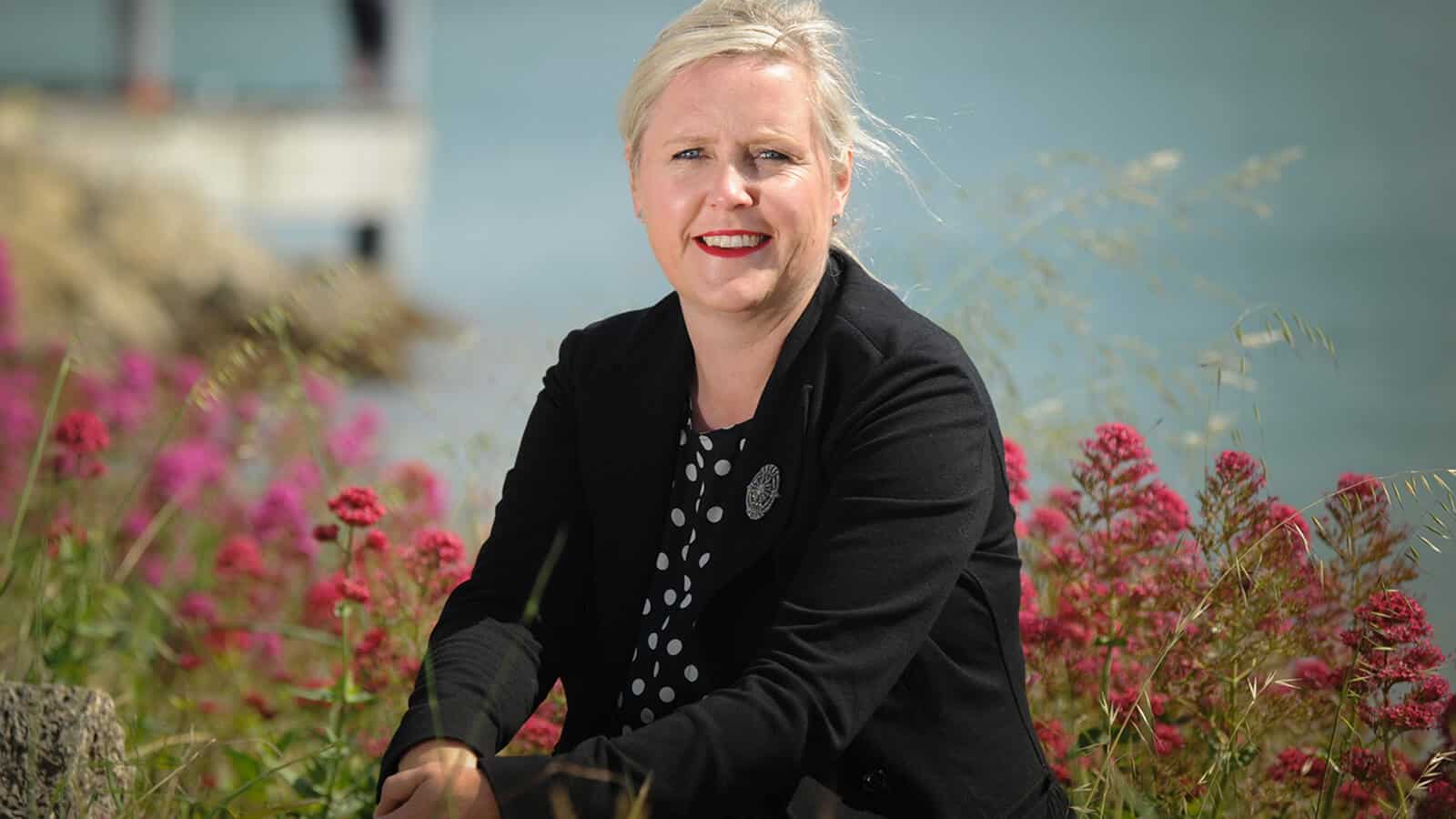
Dundas’ list features chicken sandwiches from Milk and Honey, chocolate mallow puffs from Picnic and Isaac Hayes Chocolate Salty Balls from Bistronomy.
It speaks of a life buzzing from event to event, but Dundas is also a home body, she makes her own muesli, and, after a full calendar of eating out, enjoys a simple boiled egg.
Dundas’ list also includes Aromatics port marinated mushrooms, Bay Blueberries, Bostock chicken, Paolo’s chicken liver pate from Vetro, Ya Bon’s breads, pastries and pies, Holly Bacon, and Origin Earth cheese, and a long list of favourite wines from Elephant Hill to Craggy Range and everywhere in between.
Jennifer Le Comte
“Knowing the food is about knowing the terroir,” says Jennifer Le Comte, a restaurant chef by trade and now operator of Opera Kitchen in Hastings, and The Picnic, Smiths and Albion Canteen in Napier.
The particular micro-climates and geography that inform flavours in the Bay mean they are specific to the place and its conditions.
On Le Comte’s list are apricots from growers in the small area around the Petane Domain. She explains, there’s a particular micro-climate there that means the apricots are the first of the season. Similarly the asparagus grown in tunnel houses in Awatoto are four weeks earlier than elsewhere.
Le Comte believes the best way to enjoy Hawke’s Bay cuisine is to watch the seasons change, search out the true gems of the terroir, be brave enough to explore back roads and stop at roadside stalls.
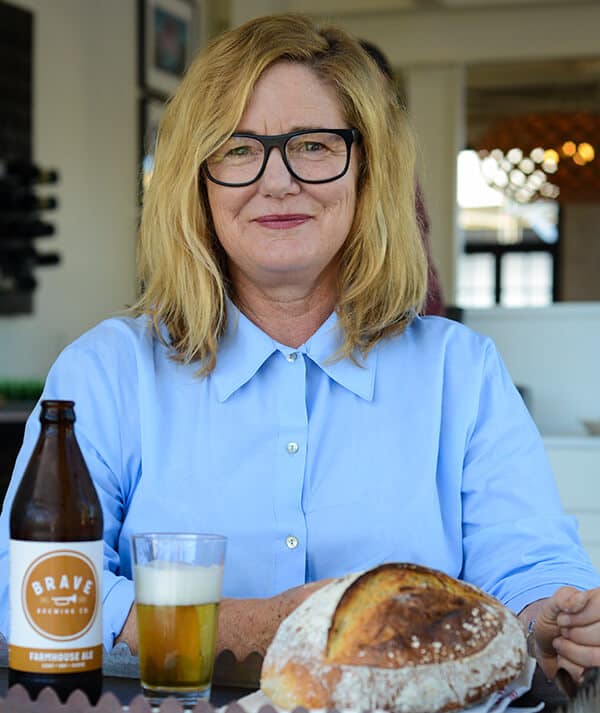
“Buy in season, that’s when produce is cheapest and freshest, then use those skills we all have in our families to store produce for the rest of the season, freeze it, preserve it, bottle it,” says Le Comte.
Le Comte is a proponent for seeking out seasonal flavours directly from the grower, and, from a restaurateur’s perspective, building a relationship with a producer means securing ingredients that are new or rare.
“Clyde Potter from Epicurean has always been vital to what we can present to our customers. He grows some very interesting things and will grow whatever you want really,” says Le Comte, who puts Epicurean’s lemon verbena on her list. “For me, it signals the beginning of summer.”
Le Comte’s list also includes Rod McDonald Wines’ One-Off Syrah Viognier, Bilancia’s La Collina Syrah and Brave Brewing’s Farmhouse Ale, sour dough from The Picnic, barnea olive oil from Village Press and comb honey from Arataki, figs from Ruby Glen in Meeanee and goats’ milk kefir from a secret provider somewhere off State Highway 50.
Kate Lester
Kate Lester is the chef d’jour for Hawke’s Bay weddings, and any event held in an out-of-the-way place (think packhouses, woolsheds and paddocks). She celebrates Hawke’s Bay produce with every event she caters. She’s often cooking for large numbers, so her list is made up of ingredients that can be stretched to forty diners or even 150 wedding guests.
“I’m not a complicated cook, my secrets are salt and lemon juice.” Lester explains how these two can create magic as long as the original produce is top quality.
“People think my food’s amazing but it’s good ingredients, they’re just blown away by the flavour.”
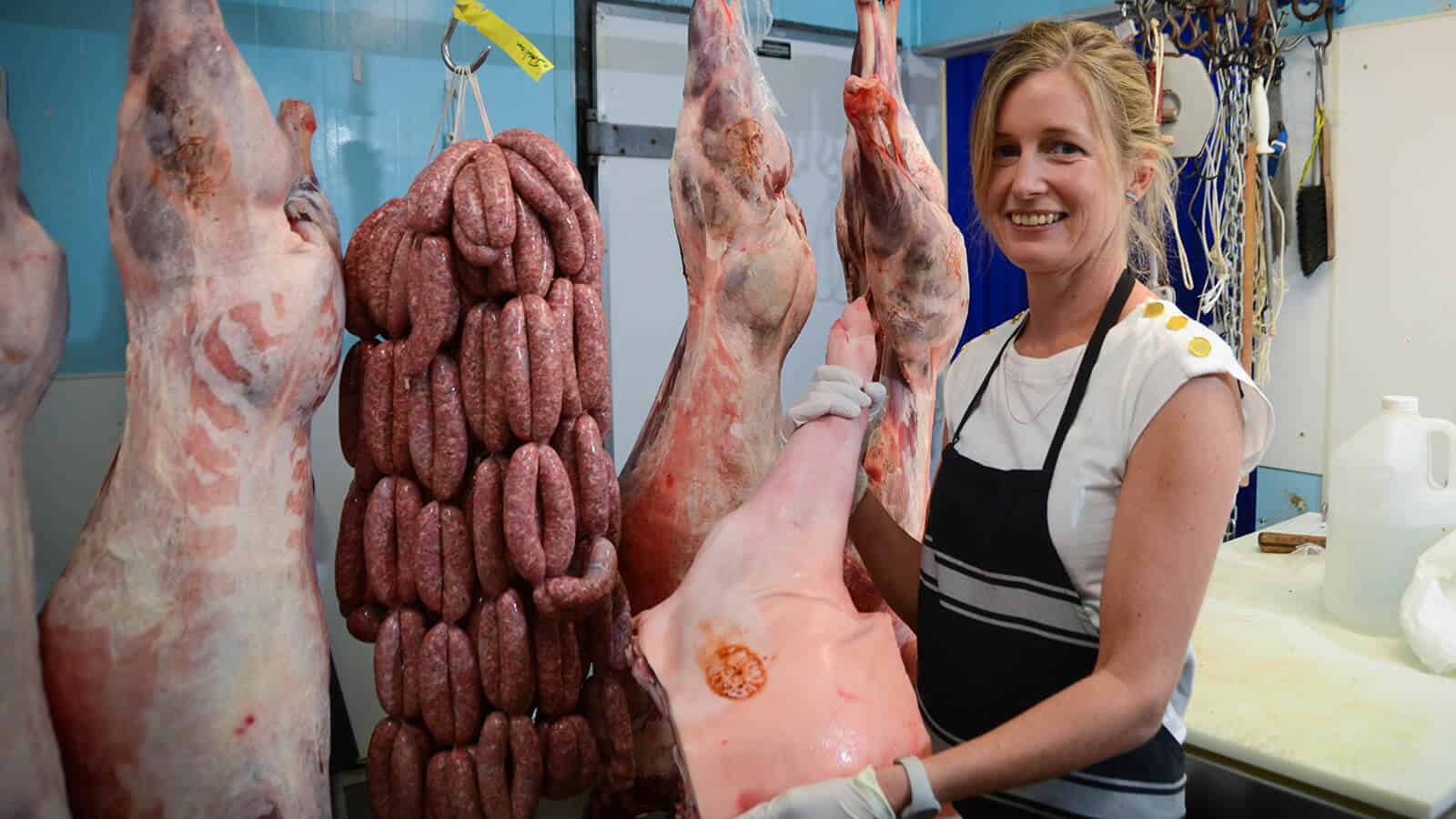
Much of that raw ingredient comes from Lester’s local butcher, who makes sausages especially for her – strings and strings of them – as well as preparing pork for her famous pulled pork canapés. Her other favourites are Orcona’s smoked chipotle chilli flakes and harissa paste, and Aromatics smoked mushrooms, all three punching up the big flavours in her dishes.
Also on Lester’s list are seasonal fruit bought at the gate: Kirsten’s cherries, Bay Blueberries, Scott’s strawberries and raspberries. Lester’s mum makes tomato sauce and plum sauce in the season and they are both favourites, gifting those seasonal fruits to the rest of the year. As with all foodies, coffee is vital fuel, her pick is Bay Espresso’s Dark and Divine beans.
John MacPherson
Meatballs are a very Hawke’s Bay thing, John ‘Mac’ MacPherson says. And the best meatballs are from BJs Bakery. “If you’ve never had one you must, they are a deep fried bread stuffed with some weird meat paste that no one knows what’s in it. They’re off the hook.”
MacPherson owns Advintage, one of the top online wine sites in New Zealand. He runs the business from Havelock North.
“I’m a guy so my list is meat, sauce and booze.”
Vegetables do feature. He considers gai lan from Delight Plus near Countdown Napier one of the best Hawke’s Bay offerings; it’s broccoli florets in garlic sauce. Onion bhaji from Namaskar in Havelock North is also on the list.
“I’m actually super fussy about quality,” Macpherson says. “As a family we hunt out the good stuff, we’ll go on these big food missions all the time.”
MacPherson believes Hawke’s Bay people should have strong views on food because we produce so much of it.
“In sweetcorn season, for example, everyone’s super opinionated about who’s got the best. People really care. What does Hawke’s Bay do? We produce food and wine so not caring is not good enough. You have to have an opinion,” says MacPherson.
“My list is things made by friends or the neighbour across the creek, handmade things by local producers who are just good people. Why wouldn’t you eat that way?”
Alongside the meat and booze, sharing food with friends is high on MacPherson’s priority list; his dinner parties are legendary.
“Food, wine and friends, that’s not a bad combo,” he laughs.
MacPherson’s list also includes Scott’s strawberries, Holly bacon, Village Press olive oil, pork sausages from the Village Butcher in Havelock North, One-Off Chardonnay from Rod McDonald Wines, beer sticks and black pudding from Deli Meats, and the artichoke dip from Deliciosa in Havelock.
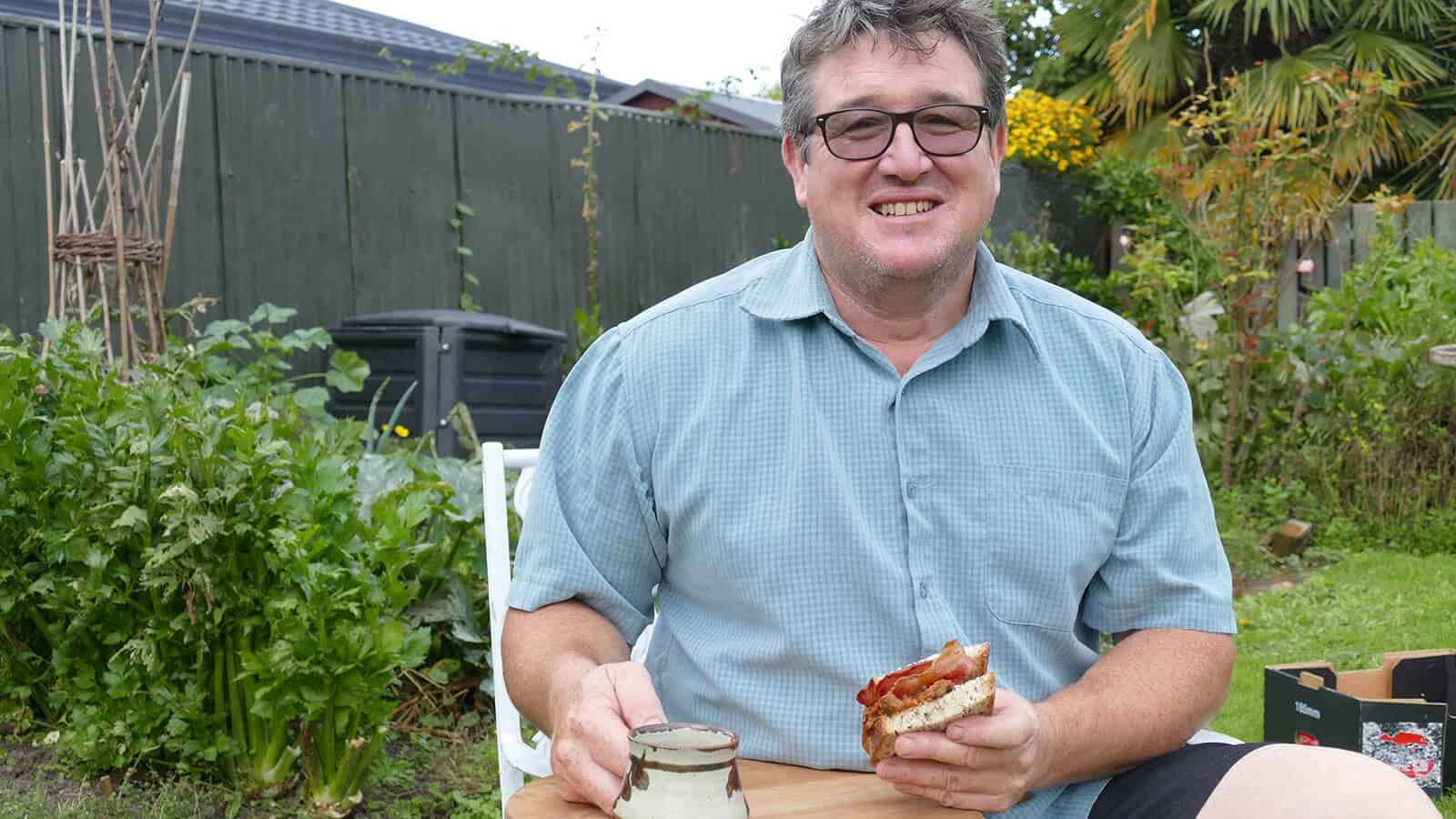
Ian Thomas
Ian Thomas has always been involved in food, in various capacities: free range egg producer, the official Eggs Inc ambassador known as The Egg Man, host of wine and food tours, now The Paella Man with Paella-a-gogo. Thomas was one of the people roped in by Graeme Avery to get the inaugural Farmers’ Market up and running in 2000.
“I was excited by what he was proposing so I took on the role of chair of the HB Farmers’ Market group.” There were 17 stalls at that market, the first of its type in New Zealand. “Which is funny because there’s about 30 producers who claim they were there!”
Thomas is freshly involved with the Market after a hiatus of a few years. Using only Farmers’ Market ingredients, he cooks up dishes every Sunday in Hastings.
“Whatever’s in season, that’s what we cook,” explains Thomas, who’s a stickler for the rule, using only 100% Hawke’s Bay grown produce on offer at the Market. “I am determined to stick to that because I believe that’s what farmers’ markets should be.” In reality it means there’s no butter in his Market meals, because no one in
Hawke’s Bay is making butter, similarly no cream; he uses Hohepa quark instead.
“That mentality creates opportunity. If you show the gaps, if you keep creating openings, then people see opportunities for themselves.”
Much of Thomas’ list is raw ingredients: a shoulder of lamb, celeriac, gala apples.
“Everybody has their apple, mine is gala. To really enjoy any fruit, only eat it in season. That way you create treats for yourself,” says Thomas.
Thomas’ pick for bread is chia loaf made by Entice. “It stands out as a really lovely food that just happens to be a bread, rather than simply a vehicle for other food.”
Between two slices he enjoys middle bacon from Holly and aubergine pickle from Aromatics.
Also on Thomas’ list is St Andrews Limes lime and mustard seed dressing, Village Press truffle-infused olive oil and Wild Venison chorizo. He’s fuelled by Alpha
Domus Aviator in the evening and a plunger of Aurum 18 Carat Gold first thing every morning.

